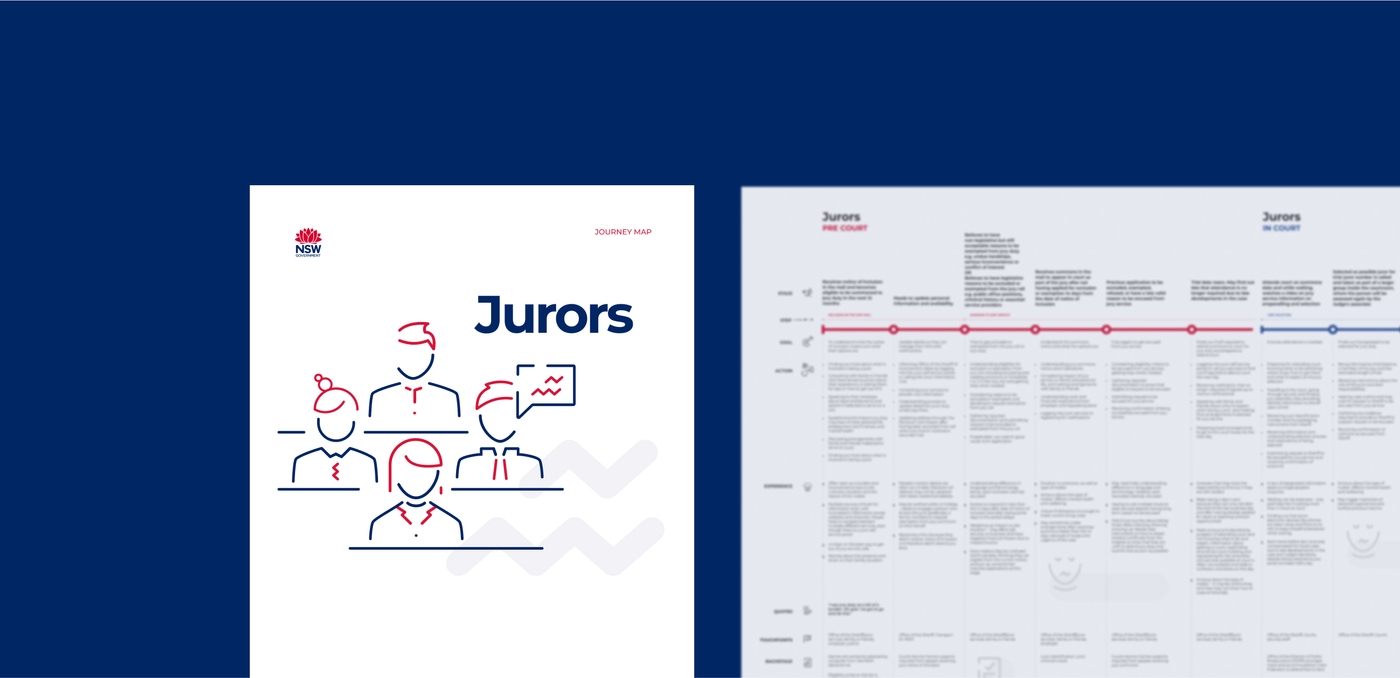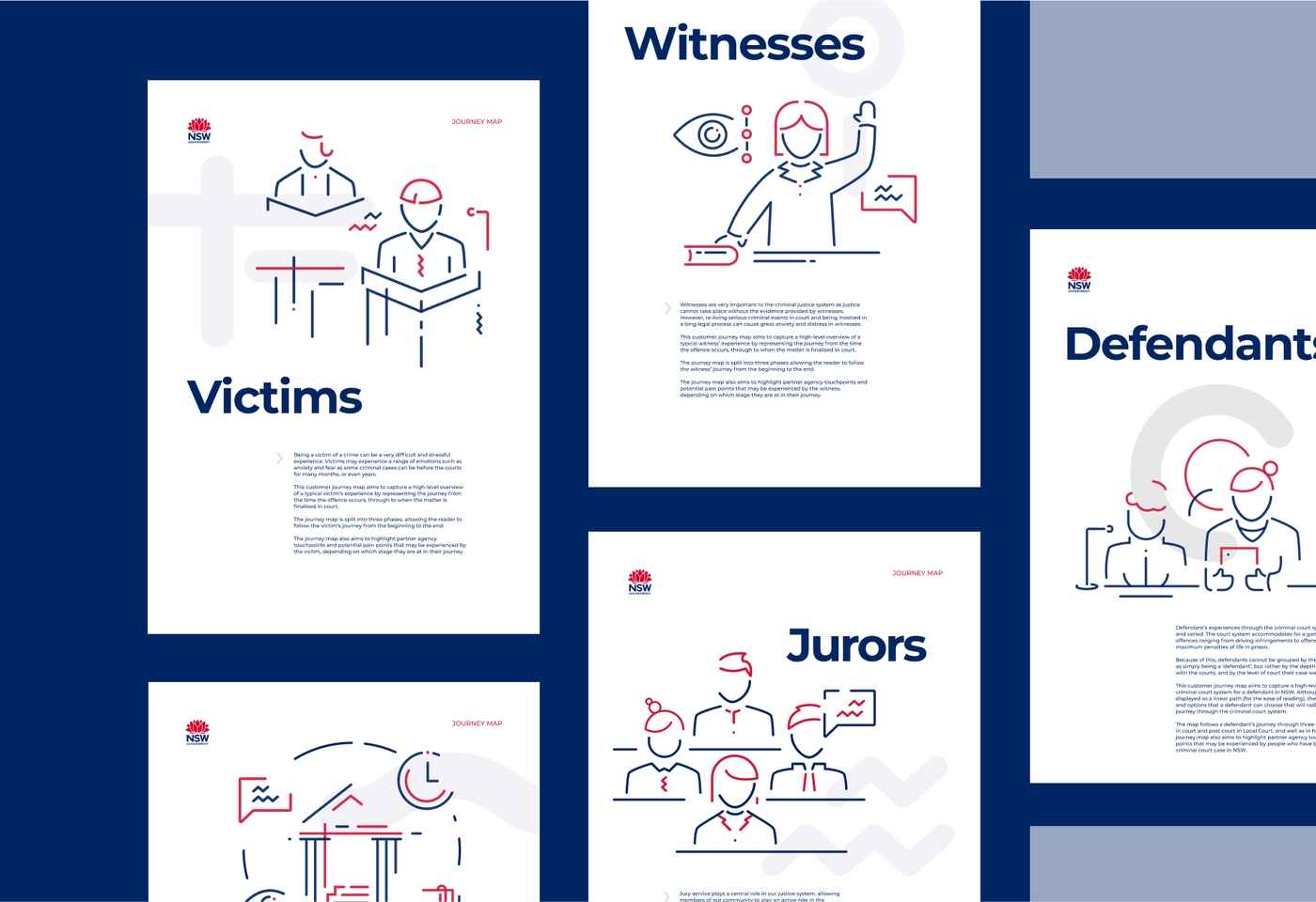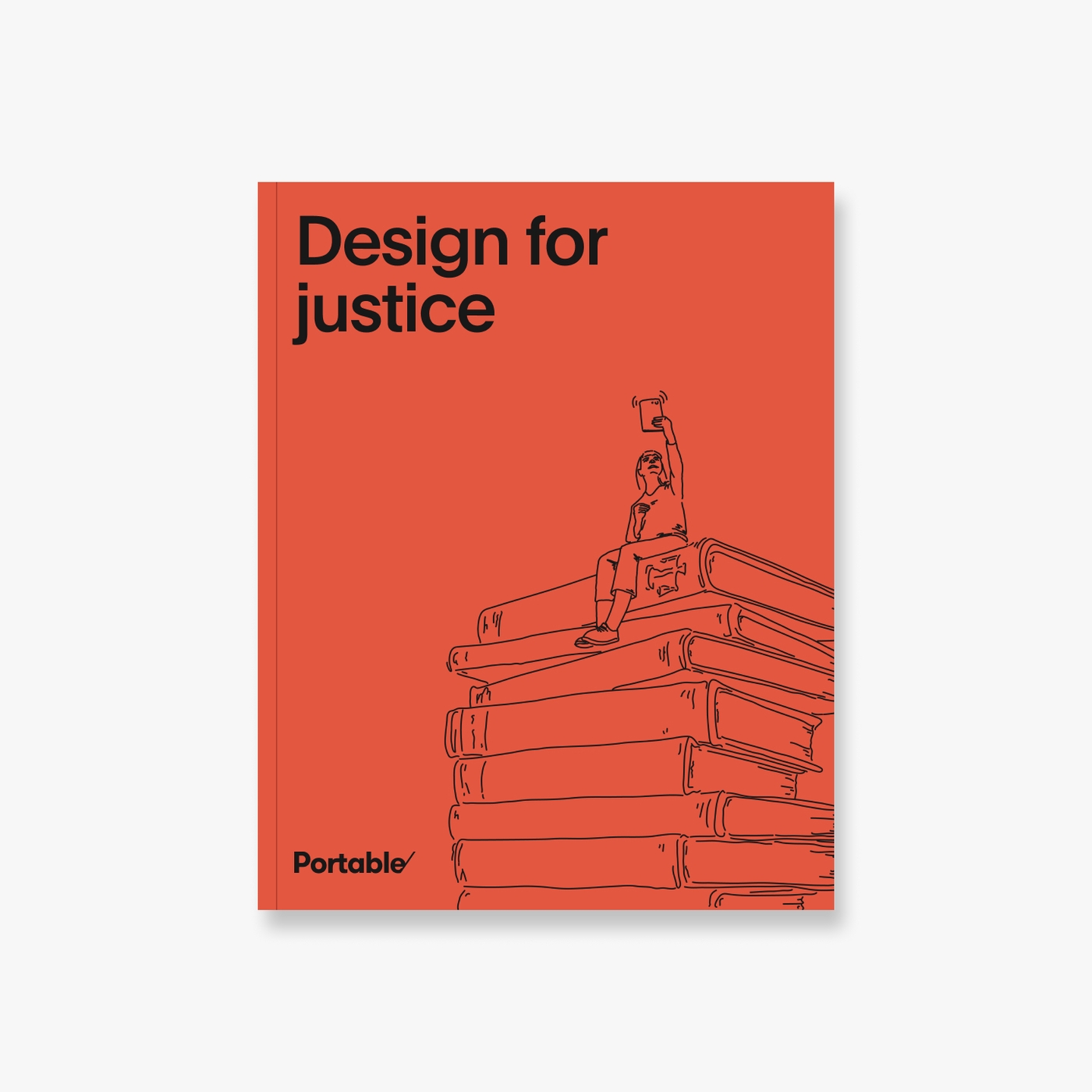People involved in the criminal justice system can find the experience of attending court to be confusing, costly, and time-intensive. Improving this for citizens of NSW requires understanding where people experience pain points and frustrations. By visualising their journeys, we’re able to identify where the opportunities to create better experiences could be, by improving business processes and updating technology.
Because of this, the NSW Department of Communities and Justice (the Department) carried out research of a cross-section of customer groups to uncover the experiences of those interacting with the criminal justice system. These customer groups were defendants, victims, friends and family members of defendants, friends and family members of victims, jurors and witnesses. The Department found that the research produced a lot of data, and the experience throughout each stage varied greatly for the different customer groups. They engaged with us to develop a suite of journey maps to visualise the overall citizen experience, using the research data provided, so that we could highlight the underlying systems and processes that inform the criminal justice journey.
Improving the experience of the justice sector for Australians across the nation is a core focus area of our legal design practice at Portable. While working on this project, we were also helping the Department to develop a visual roadmap platform on an adjacent but separate project, to help communicate long-term strategic initiatives in order to create more efficiencies within internal processes and systems.

Problem
This project sought to highlight the different experiences for customers within the criminal justice system, to communicate these experiences and create a unified understanding for the different teams within the Department, and to help achieve the aims to deliver improved services outlined in their Criminal Justice Efficiency Strategy.
The Department selected Portable to create five journey maps, to outline the customer journey for jurors, defendants (including friends and family), victims (including friends and family), witnesses and a high-level overview of the process, based on the research outcomes provided by the Department. The journey maps were to look at the customer’s experience from start to finish – from the time of arrest to when the matter is finalised.
The purpose of this project was to:
- Create an evidence bank for other stakeholders – subject matter experts, legal aid representation, public prosecution, policy and law reform, juror services management and other external organisations such as victim advocacy
- Map out the business process
- Show the pain points and opportunities in the current process
- Create a unified understanding across different departments and levels (junior, senior etc) within the Department
- Get a deeper understanding of how each of the citizen groups are thinking, feeling and doing throughout the different stages of the customer journey
- Align with service delivery expectations in the Criminal Justice Efficiency Strategy
- Create assets than can be easily edited and updated in the future by the Department
Approach
After carrying out desktop research of best practice visual direction and information design approaches, we refined the content for the jurors’ customer journey and developed two visual directions for the journey map. The Department chose their preferred approach, which we then rolled out to the remaining four journey maps.
There was a lot of content to sift through, so our team worked hard to break it down into easily digestible chunks which would fit well within the layout and help create a unified look and feel across the suite of journey maps. Our design team then developed bespoke illustrations to represent each customer group, while aligning with the NSW Government Digital Design Standards for colours and typography.

Outcomes
These five customer journey maps enable the Department to communicate, emphasise and share the different experiences of their customers within their internal departments, ensuring there is a unified understanding of the process. From here, the Department will be able to improve the process for each customer group, to provide a better experience of the criminal justice system for all.
Working with the Department gave us the opportunity to increase our own understanding of the complex nature of the journey through the NSW justice system. This complexity, and our work in trying to simplify and group these multiple steps, will not only help the Department going forward but has also helped to inform our work in mapping and illustrating journeys through the justice sector, to improve the experience of people accessing justice across the country.
Halle Eren, Principal Project Manager, NSW Department of Communities & Justice:
“Even though we had tight timelines, I found Portable to be professional and easy to work with. We provided them with large volumes of information and from these they were able to create journey maps that were easy to read and understand by our stakeholders. I would highly recommend them and work with them again in the future.”
Luke Thomas, Senior Legal Designer, Portable:
“Working with researchers and designers at the NSW the Department gave us the opportunity to collaborate with a team that had already conducted extensive research, giving us the ability to focus our efforts on how their content could be organised, displayed, and illustrated. It was an excellent opportunity for our legal design team to sharpen our skills in communication design, collaborate with in-house government design teams, and create something that visually demonstrates the overwhelming complexity of a journey through the justice system.”
Get your copy of our design for justice report
